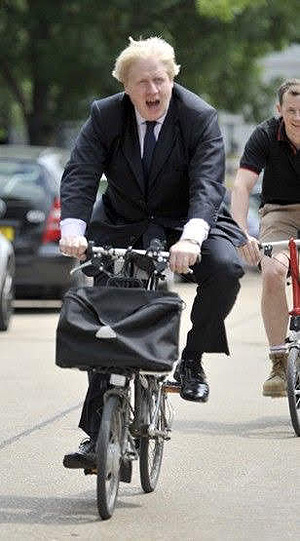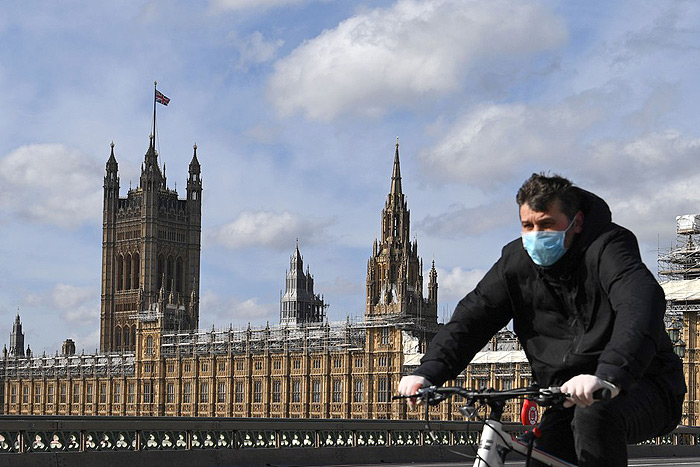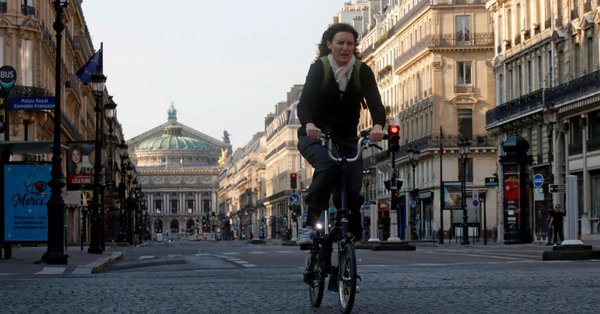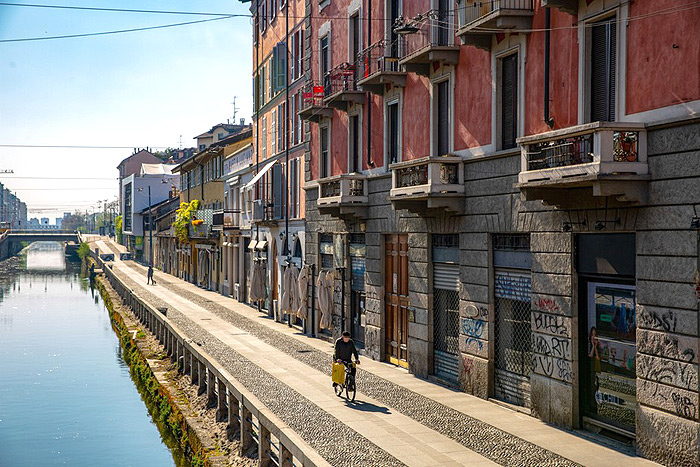The stay-at-home lock-downs around the world, implemented to stem the contagion of COVID-19, has serendipitously demonstrated the utility of reduced vehicle traffic in cleansing the urban environment. Much cleaner and healthier air, reduced noise, reduced gridlock and traffic, reduced parking hassles, and especially safer, open streets for pedestrians, bicyclist, and other alternative transport users.
San Diego has moved quickly to adapt Safe Streets throughout the county. SANDAG, city governments, and local neighborhoods have all begun to phase in steps to open streets to the walkers, bicyclist, skaters, scooters and others, allowing for safe social distancing. Reducing vehicle traffic to only those necessary to access residents’ homes, provides for more healthy space to exercise, and to move safely around neighborhoods for shopping, dog walking, and children playing.
==== ==== ==== ==== ====
Some ‘Slow Streets‘ programs from around the world.

Post-Pandemic Future Will Be ‘Golden Age’ For Cycling, Boris Johnson Tells Parliament
Carlton Reid May 6, 2020 forbes.com
U.K. Government Boosts Bicycling And Walking
With Ambitious £2 Billion Post-Pandemic Plan
Carlton Reid May 9, 2020 forbes.com
PRIME MINISTER Boris Johnson told parliament on May 6 that the near future “should be a new golden age for cycling.”
An updated Cycling and Walking Investment Strategy will be launched by Johnson in the summer, revealed Shapps today, including:
- Creation of a national cycling and walking commissioner, and inspectorate. (The cycling champion role was announced some years ago, but no “cycling Czar” was ever appointed—the inspectorate is new, and if it was given “teeth” it could prove useful.)
- Higher standards for permanent infrastructure across England. (This is the long-awaited and much-trailed cycle infrastructure design guidance.)
- Creation of a long-term budget for cycling and walking similar to road funding.
- Appointment of a zero-emission city with only electric motor vehicles and other forms of non-polluting transport allowed in the center.
As part of an emergency response to urban travel during the pandemic, the Department for Transport (DfT) has been inspired by “tactical urbanism” measures in cities such as Berlin, Paris, and Milan. Some U.K. cities have already introduced measures of their own: Leicester unveiled a “keyworker corridor” cycleway last week.
Prime Minister Boris Johnson Pledges £5 Billion
In New Cash For Buses And Bicycle Infrastructure
Carlton Reid Feb 10, 2020 forbes.com

==== ==== ==== ==== ====

Paris to roll out 50km of cycle lanes to stop spread of Covid-19 on public transport
12 May 2020 thelocal.fr
Au Revoir Les Automobiles: Paris Closes Rue De Rivoli To Cars
Carlton Reid April 30, 2020 forbes.com
Paris To Create 650 Kilometers Of Post-Lockdown Cycleways
Carlton Reid Apr 22, 2020 forbes.com
Paris Has a Plan to Keep Cars Out After Lockdown
Feargus O’Sullivan April 29, 2020 citylab.com
In a Global Health Emergency, the Bicycle Shines
Laura Laker March 25, 2020 citylab.com
Paris Mayor: It’s Time for a ’15-Minute City’
Feargus O’Sullivan February 18, 2020
Traffic Is Unbearable on Paris’s Beltway. The Fix? Remove Lanes
Feargus O’Sullivan May 28, 2019

==== ==== ==== ==== ====

Europe’s Cities Are Making Less Room for Cars After Coronavirus
Feargus O’Sullivan April 22, 2020 citylab.com
Milan may be ahead of the curve, but it is far from the only European city considering similar car-mitigation measures. Rome Mayor Virginia Raggi also wants to encourage more active travel and open summer schools, while boroughs in Berlin are also reclaiming road space to make into wider bike lanes. Brussels has gone yet further. From May 4, the Belgian capital’s entire city core will be a priority zone for cyclists and pedestrians, one in which cars cannot exceed a speed of 20 kph and must give way in the roads to people on foot or on bikes. This comes on top of an ongoing pedestrianization plan designed to make Brussels’ core a more attractive place for people on foot.
In Paris, meanwhile, that city’s campaign against private cars will get a fresh boost: As well as expanding the width of existing cycle lanes, Paris and the Île-de-France region are fast-tracking a temporary version of its planned new network of nine long-distance cycleways in response to the pandemic. Linking the inner city with the suburbs, the first stretches of this new network will open in May.
Vienna’s Cultural Approach to Going Car-Free
Feargus O’Sullivan January 29, 2020 citylab.com
In Paris, a Very Progressive Agenda Is Going Mainstream
Feargus O’Sullivan January 21, 2020 citylab.com
How Paris Hopes to Build an E-Bike Boom
Feargus O’Sullivan September 24, 2019 citylab.com
Why Berlin’s Approach to Car Bans Is a Little Different
Feargus O’Sullivan August 8, 2019 citylab.com
In Madrid, a Car Ban Proves Stronger Than Partisan Politics
Feargus O’Sullivan July 24, 2019 citylab.com
==== ==== ==== ==== ====

Cities actions are key to cycle through and beyond the crisis
Agathe Marie 07 Apr, 2020 ecf.com
Cities are making place for bicycles
Many cities are adding temporary bicycle lanes to face the surge and allow safe cycling. In New York, Polly Trottenberg, city transportation commissioner, said her agency was even reviewing additional measures to accommodate the increased number of cyclists. For example, replacing some car traffic lanes with temporary bicycle lanes; or adapting some plazas and pedestrian areas in bicycle parking. Berlin did it on key commuters’ roads, and a pilot project launched on March 30 works on implementing new bicycle traffic facilities in other areas. In Bogota, it’s hundreds of car lanes that have been temporary replaced by cycle lanes, expanding the 550km of existing bicycle infrastructure by 76km in a first stage, increased to 117km as of 17 March. Mexico City may follow the same initiative, multiplying by four its bicycle paths.
Will cities keep better and more infrastructures for cyclists afterwards? Safe cycling provides equitable access to more places for more people. This pandemic is creating a momentum to acknowledge the major role that cycling can play to enable us to safely and resiliently navigate our cities. As former Olympian cyclist and current walking and cycling commissioner of Manchester, Chris Boardman said: “Pick a crisis, and you’ll probably find cycling is a solution”.
The European Cyclists’ Federation’s Recommendations for the COVID Recovery
Niccolò Panozzo 12 May, 2020 ecf.com
Move Aside Cars! New Car-Free Zones
Maya Watson 11 May, 2020 ecf.com/
Move Aside Cars! New Speed Limits For Covid-19 Crisis
Maya Watson 22 Apr, 2020 ecf.com
Ambitious Transport Decarbonisation Plans Released: Will The UK Deliver?
Maya Watson 07 Apr, 2020 ecf.com
Ddecarbonising Transport: Setting the Challenge
Cities actions are key to cycle through and beyond the crisis
Agathe Marie 07 Apr, 2020 ecf.com
Air pollution falls to minimums due to reduced traffic during quarantine:
what can Europe learn?
Alberto Vela 27 Mar, 2020 ecf.com
Cycling against the COVID-19
Agathe Marie 25 Mar, 2020 ecf.com/

